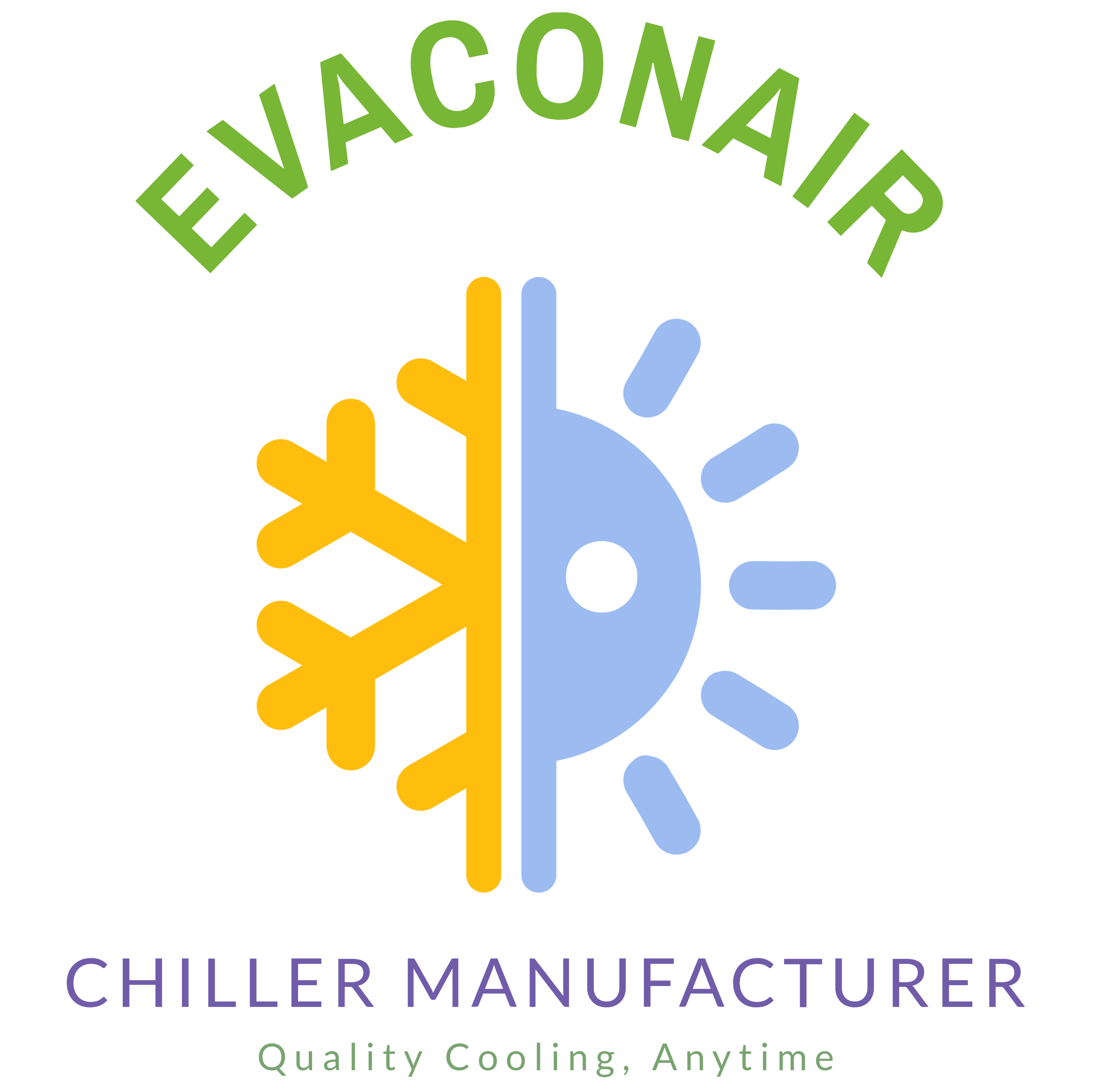Blog
What is the Chiller Process?
The chiller process refers to the sequence of operations within a chiller system that cools water or another fluid to remove heat from a building, industrial process, or piece of equipment. This process is crucial in maintaining optimal temperatures in various applications, from HVAC systems in large buildings to industrial processes that require precise temperature control.
Steps in the Chiller Process
1. Evaporation
- The chiller process begins in the evaporator. The evaporator is filled with water or another coolant that needs to be cooled. As the refrigerant in the evaporator absorbs heat from the fluid, it evaporates, changing from a liquid to a gas. This cooling effect is essential in systems such as Air-Cooled Water Chillers and Water Cooled Screw Chillers.
2. Compression
- The refrigerant gas, now carrying the absorbed heat, is drawn into the compressor. The compressor increases the pressure and temperature of the refrigerant gas. This step is vital as it prepares the refrigerant for heat rejection in the condenser. Compressors in systems like Air Cooled Screw Chillers are designed for efficiency and reliability, ensuring that the process remains consistent.
3. Condensation
- The high-pressure, high-temperature refrigerant gas then enters the condenser. In the condenser, the refrigerant releases its absorbed heat to the surrounding air or water. In Air-Cooled Water Chillers, the heat is released into the air, while in Water-Cooled Water Chillers, the heat is transferred to water, which is then cooled by a cooling tower. As the refrigerant loses heat, it condenses back into a liquid.
4. Expansion
- The liquid refrigerant then passes through an expansion valve. This valve reduces the pressure of the refrigerant, cooling it down significantly before it re-enters the evaporator. The low-pressure refrigerant is now ready to absorb heat again, and the cycle repeats.
Applications of the Chiller Process
- Industrial Cooling: In industries such as plastics, pharmaceuticals, and food processing, maintaining specific temperatures is crucial. The chiller process is integral to controlling temperatures in equipment like Mold Temperature Controllers and auxiliary systems such as Hot Air Dryers.
- HVAC Systems: In large commercial buildings, the chiller process is key to cooling air that is then distributed throughout the building. The integration of the chiller process with systems like Dehumidifiers and Vacuum Hopper Loaders ensures a comfortable and controlled indoor environment.
Efficiency Considerations
- Energy Efficiency: The efficiency of the chiller process can significantly impact energy consumption. High-efficiency chillers, such as Water Cooled Screw Chillers, are designed to minimize energy use while maintaining high cooling capacity.
- Maintenance: Regular maintenance of the chiller system is essential to ensure the process runs smoothly. This includes inspecting components like the compressor, evaporator, and condenser, and ensuring that refrigerant levels are optimal.
Conclusion
The chiller process is a fundamental aspect of maintaining controlled temperatures in a wide range of applications, from industrial processes to building climate control. Understanding how this process works is key to selecting and maintaining the right chiller system, whether you are considering an Air-Cooled Water Chiller in Ahmedabad or a Water Cooled Screw Chiller in Ahmedabad. For more detailed information and to explore chiller options, visit our products page.
